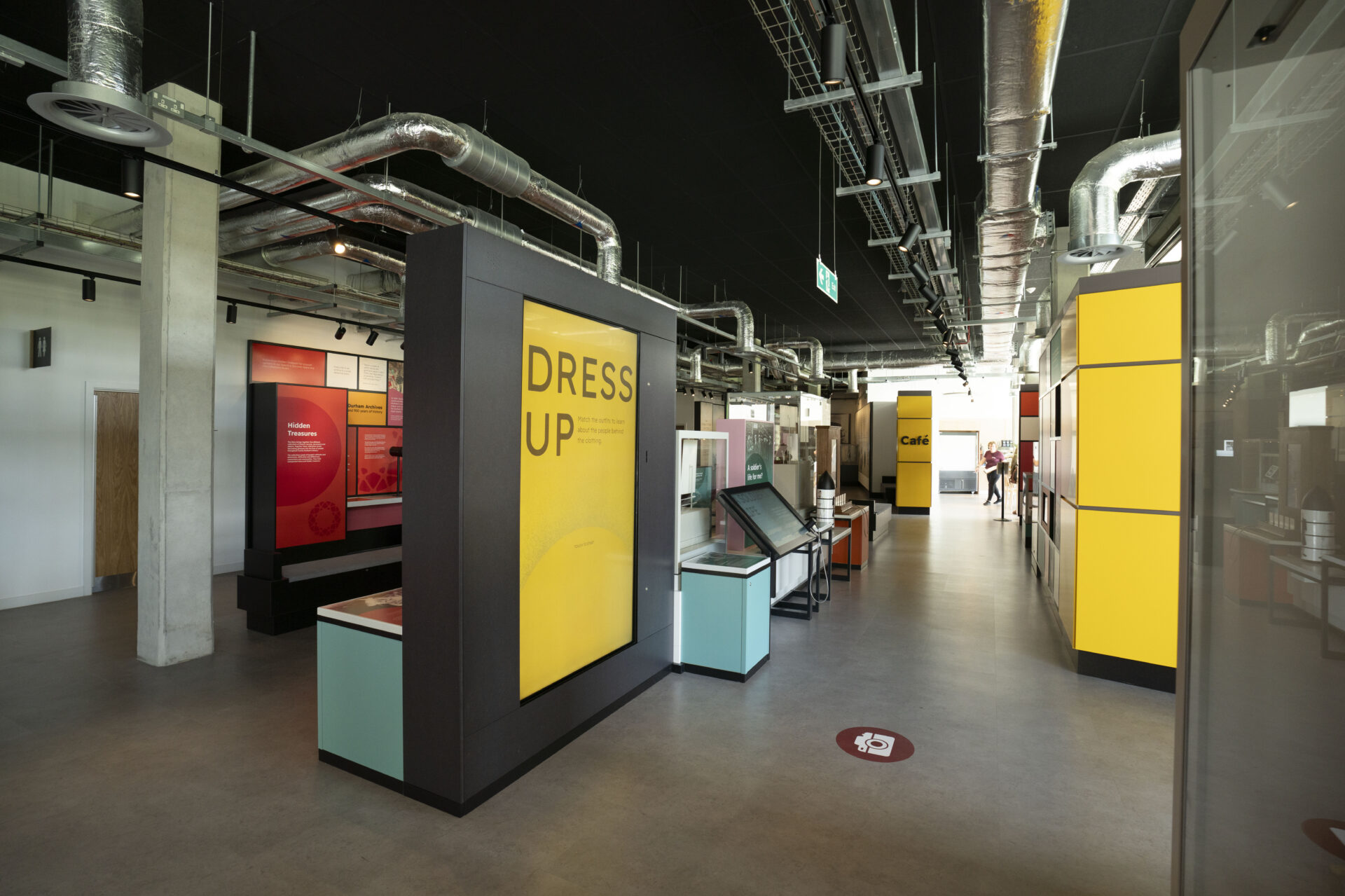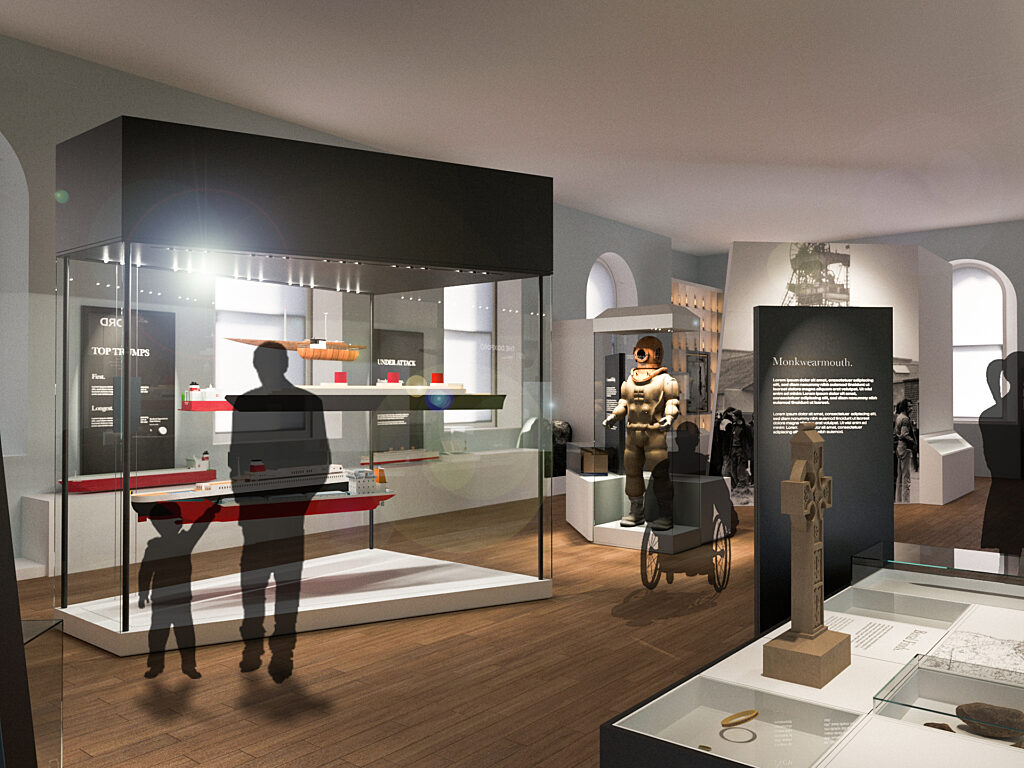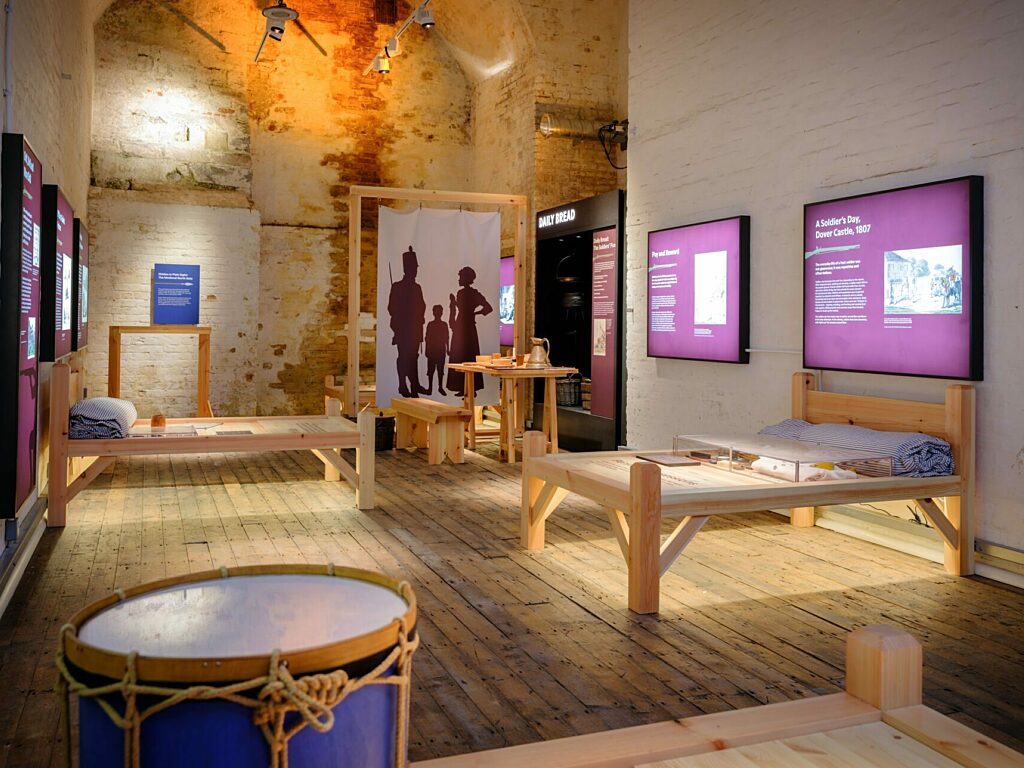Mather & Co started working on the project in 2019, overcoming challenges such as the pandemic, Brexit, and construction industry inflation. In this Q&A with our Design Director, Paul Lee, you can hear directly about the design process for ‘The Story.’
Can you walk us through the design process from initial brainstorming to the final design?
During RIBA Stage 2, Mather & Co worked as a consultant directly appointed by an architect. This was done to ensure that the infrastructure design could be coordinated, and a creative design could be produced to secure further funding, including a National Lottery Heritage Fund (NLHF) bid. We developed a concept narrative based on the idea of a 'Record of a Lifetime', where the play on archives and collections could be brought together like a jigsaw to build a picture of a place or an individual.
The concept design, completed in 2019, went into submission bids for further funding. We tested ideas with some audiences through client-organised consultations, adding more family and younger audience-related content and balancing the emphasis on digital with more traditional types of interpretive media, including interactives, objects, and graphics.
The final developed and detailed design took two years, from 2020 to 2022, to be completed and costed by the market. We provided interim design presentations, visualisations, and continual design iterations to respond to the changing building design, working with the large windows, relocating the café and research areas to maximise daylight for open areas of social space, but creating partitioned spaces for more light-sensitive needs where collections would be on display. We worked with digital consultants to evolve a digital strategy prior to completing the final technical specification to ensure the range of digital offerings had the potential to tell the stories and spoke to the council's search. We also provided guidance on procurement, helping to set up the process, evaluation criteria, and tender documentation.
How did you ensure that the design would effectively communicate the historical and cultural significance of Durham?
The design was a secondary part of a wider process to ensure that the stories told within The Story only came from within the walls of the stores. We rejected the idea of a chronology early on, as the archives and records office had large gaps in continuity where time periods and evidence weren’t available. Instead of making this up or simply not referencing it, we elected to go with a thematic process that created a series of themes relative to the county and worked stories into those. Initially, it was a challenge for the team as every story could fit under multiple themes. However, the team took complete ownership of this and created a depth of narrative that brought a sense of county identity and multiple perspectives, all supported by the collections and evidence available from the archives. This authenticity is what makes the exhibits and messages in The Story relevant to the people of the county. It’s their story, told to them by their records and collections.
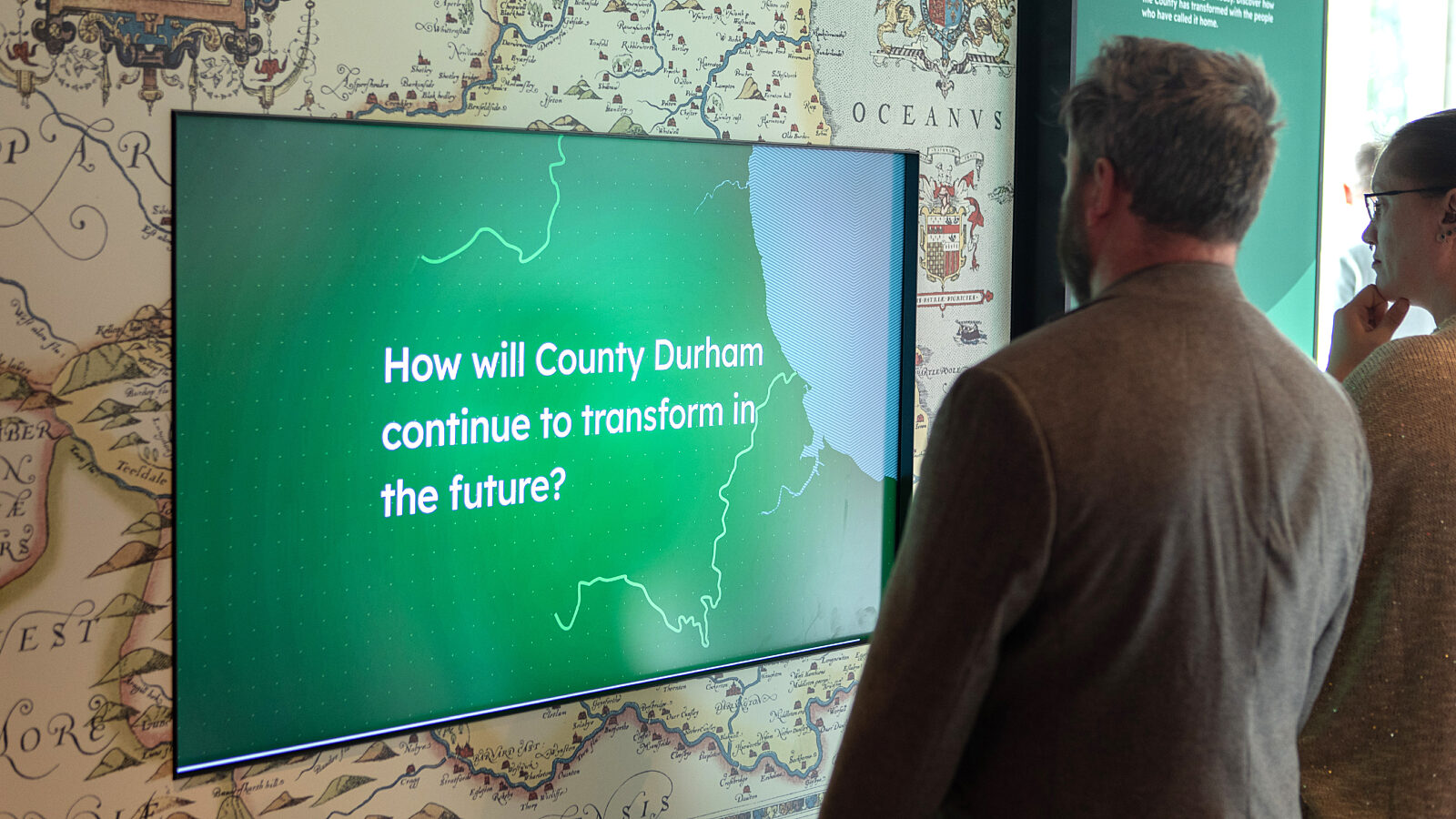
What role did technology play in the design of The Story?
Digital integration was a crucial aspect of the project, requiring us to create an engaging digital experience while also considering practical maintenance, budget constraints, and the inclusion of collections and interpretive media. We developed a range of digital exhibit ideas and enlisted a specialist to refine them.
We aimed to avoid an overreliance on touchscreens, instead focusing on a blend of immersive storytelling spaces, digital databases, mechanical interfaces, and game play elements. We also prioritized the sale of screens and outputs to make a strong visual impact while also providing smaller, more intimate content areas. We worked on innovative content presentation, access, and updates in collaboration with the centre’s new AI approach to data retrieval, ensuring easy maintenance and updates for the exhibits.
Close collaboration with the council IT teams was essential to establish ownership of the operating systems and hardware. The project was put out to tender, and we received innovative solutions from various companies, including simple touch interfaces and manual interactives linked to digital outputs.
What were some of the key milestones and decision points during the development of this project?
The project was originally scheduled to be completed before Covid-19, but the pandemic significantly slowed down the process. A lottery submission for enhanced digital was made before the lockdown. At that time, all the concept design work had been completed.
The detailed design phase took two years, waiting for the building design to be finalized as the market recovered. The historic positioning of the building and the level of conservation and restoration required presented some challenges, which caused delays in the project timeline.
Throughout the project, there were multiple interactions with local councillors and stakeholders, as well as coordination with individual collection holders at regular intervals. This included the installation of a concrete mural at the end of the building. Other milestones aligned with the traditional RIBA stages 3, 4, and 5, with the project set to open in June 2024 after being delayed by the pandemic. The entire project took 5 years to complete.
Key decision points included:
- Submission of a lottery bid for extra funding for enhanced digital in 2020
- Procurement and costing in December 2022
- Project completion in March 2024
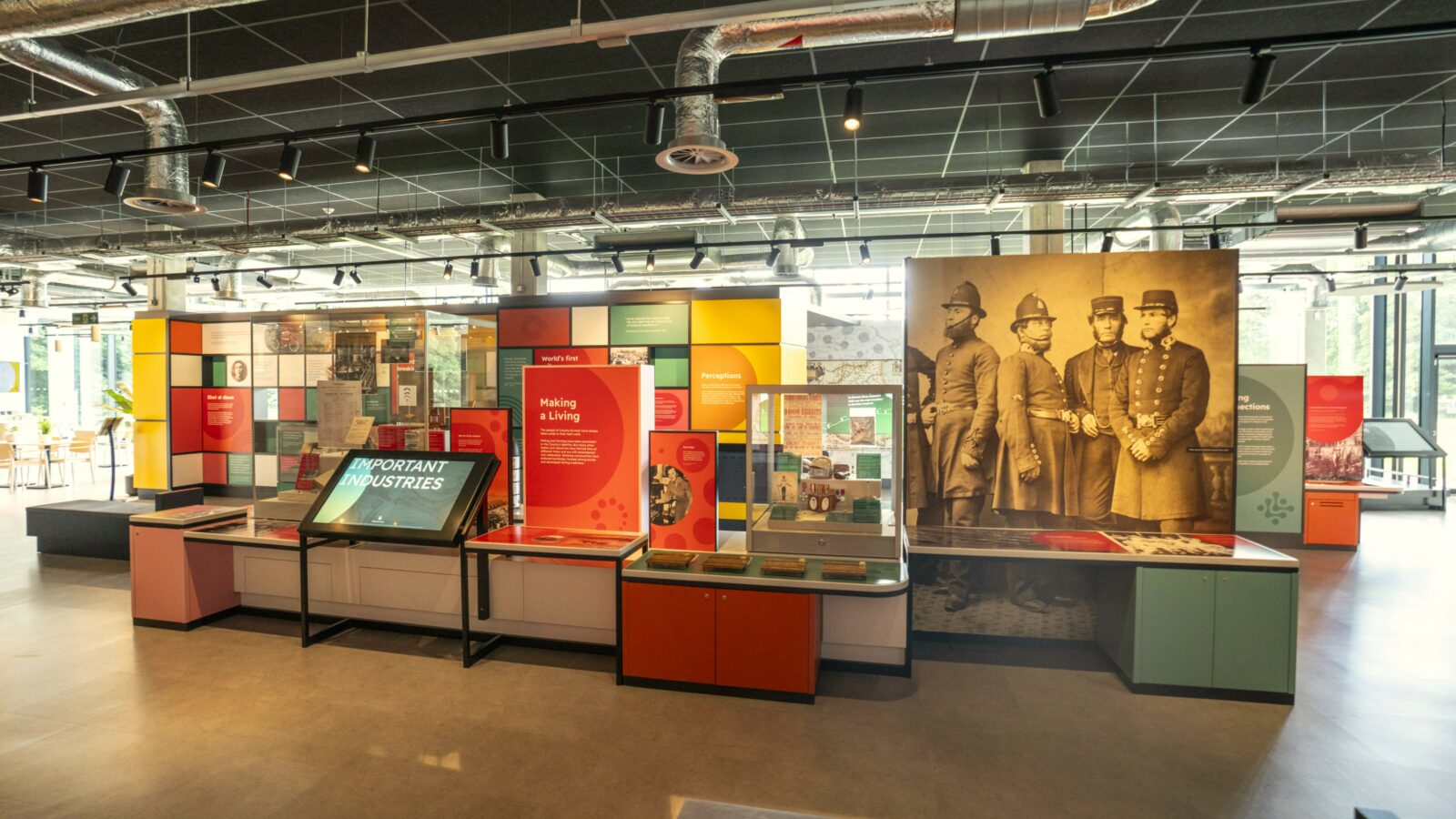
What did you learn about Durham and its people from working on this project?
The people of County Durham take great pride in their heritage and identity. The county, which is much more than just the city, boasts a diverse range of landscapes, industries, and stories. The archives are a valuable source of information for the county. The team gathered stories of people and places from various sources to create a vivid picture of the past, highlighting the cultural significance of these resources in preserving our collective history. They serve as a true record of a lifetime for all members of the community.
What were some of the biggest challenges you faced during the design process, and how did you overcome them?
The project was carried out in phases to ensure that the entire project design (both building and internal) was approved at milestone gateways. One of the biggest challenges we faced, apart from adjusting to a new way of working during and after Covid, was maintaining project enthusiasm despite slowed momentum due to furloughed staff on both sides of the team. Eventually, the commitment to the project from the council and the project team led to everyone coming back online, but it took time for the project to catch up, especially in the Archives and Registrars where backlogs in day-to-day work meant that time for this project had to be managed, for example in terms of content development.
A budget was established in 2019, but it was delivered three years later due to the pandemic and a rise in market costs, which posed a challenge. We addressed this by creating a design that could be scaled back gradually without compromising the core offer, allowing us to achieve targeted savings without sacrificing quality or depth.
How did you balance educational content with interactive and engaging elements to appeal to a diverse audience?
The project required the use of digital technology to create a variety of exhibits that would appeal to different users and age groups. We also suggested including non-digital elements to engage those who prefer accessing information in non-digital ways. The educational content was developed in collaboration with the project's learning teams and school advisors to ensure alignment with the curriculum. To understand our audience better, we engaged with key demographics early on based on other similar centres and offerings in the county.
What aspect of the project are you most proud of?
We always strive to ensure that our clients are satisfied with the projects we deliver. Despite facing challenges such as the global pandemic, we successfully met the project objectives within the specified budget and timeline. Our ability to adapt to the changing circumstances, including transitioning to online meetings, allowed us to overcome the disruptions in the construction industry and deliver a positive experience for everyone involved.
If you have a project in mind that you want to bring to life, contact us to see how we can help you!
